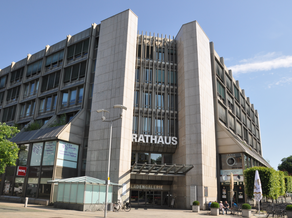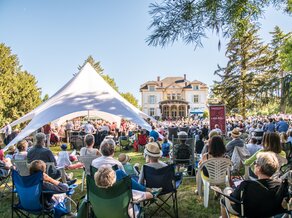Infrastructure
The districts on both sides of Tannenwaldallee, the beginning of Elisabethenschneise, which leads to Sandplackenpaß in the Taunus mountains, and separated from each other by this road, together with Dornholzhausen, form the part of the city of Bad Homburg to the west of the city center and together (excluding Dornholzhausen) have 8296 inhabitants (as of September 1, 2016). The two estates essentially consist of terraced houses, detached detached houses or apartment buildings, and in some cases villas. There are also some larger residential complexes and high-rise buildings, particularly in the north-western part of the Gartenfeldsiedlung near the main road and in the part of the Berliner Siedlung close to the city center. There are several large allotment garden colonies in both the Berliner and Gartenfeld estates.
The Berliner Siedlung Gartenfeld has good transport links. Both Frankfurt am Main and the Rhine-Main region can be reached quickly via the A661 and the B456. Public transport links the district to Bad Homburg city center; bus lines 1 and 2 run at regular intervals. Shopping facilities can be found both in the district itself and in the neighboring urban areas. The nearby commercial area offers further supply options.
The Paul-Maar-Schule is an elementary school directly in the district. Secondary schools are easily accessible in the neighboring districts. There are also kindergartens and playgrounds, which make the residential area particularly attractive for families.






